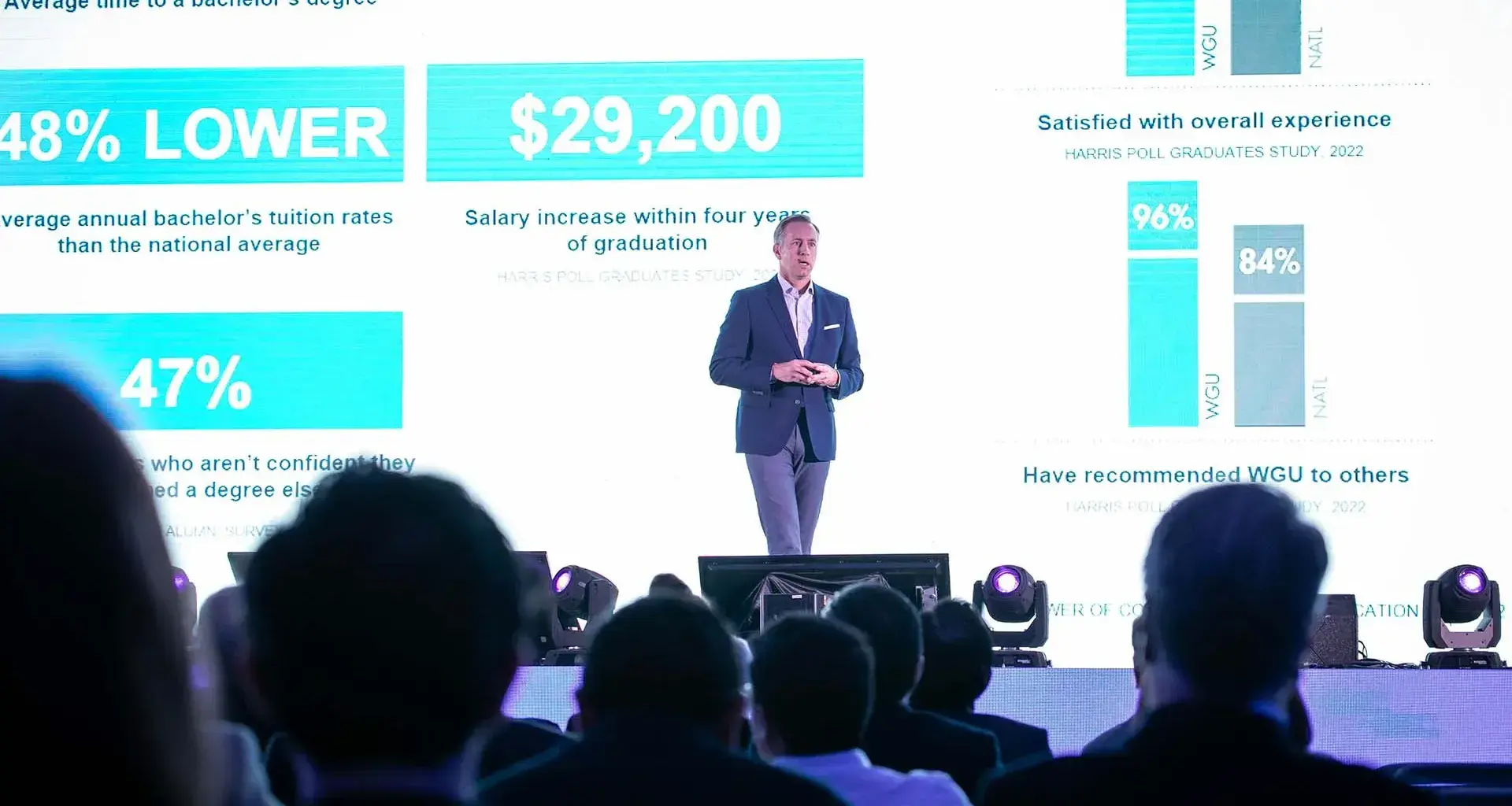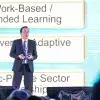Competency-based education takes into account the fact that the world is going to pay you for what you can do with what you know, explained Scott Pulsipher, President of Western Governors University (WGU).
“It’s not just about having the knowledge, but demonstrating that you’re competent in applying it,” he said during his talk at Tec de Monterrey’s IFE Conference.
In his keynote speech: Revolutionizing Higher Education: Unleashing the Power of Competency-Based Education, the academic addressed what this model consists of, how to implement it, and some of WGU’s results.

What is competency-based education?
Competency-based education focuses on what you can do with what you know and is centered on learning that provides further opportunities and is aligned with trends in the workplace.
“It’s personalized and has nothing to do with the number of hours or credits completed.”
Compared to traditional education, this new proposal requires more clarity on the part of teachers.
“From the beginning, instructors begin by explaining what they’re trying to teach, what skills students are going to acquire, and how these will be a real strength in the workplace.”
According to Scott, competency-based education seeks to:
- Make what they learn applicable to what they do.
- Prioritize learning and skill variety.
- Be flexible and adapt to each individual’s pace.
- Grade based on mastery of knowledge. You’re either competent or you’re not.
Pulsipher shared the example of WGU, where this model has been implemented since its creation. Currently, the university has 126,000 students and the capacity to graduate 46,000 individuals per year.
This university has staff dedicated to designing programs based on what students need to know to have more opportunities in the workplace.
And there are people evaluating the syllabuses, which are updated at least once a year and at most every 3 years. What’s more, students are accompanied by a mentor throughout the program.

What are the most important skills that should be taught at university?
Scott Pulsipher explained that human skills are the most important skills in the workforce, regardless of each person’s area of study.
And he listed the following ones:
- Communication
- Problem-solving
- Reasoning ability
- Dealing with uncertainty
- Teamwork
Tips for teachers for applying competency-based education
Here are some tips that Scott shared with teachers for applying this model in their classrooms, regardless of their current educational model:
- Linking the syllabus to required competencies
Make sure that the quality of your syllabus is linked to the skills needed for the future workplace.
- Mastery-based learning
First, think about your students mastering their learning, knowing how to apply it, and doing something with the knowledge.
- Learning at different paces
Keep in mind that each individual learns at a different pace and in a different way.
- Measuring success
Collect data to improve your teaching and understand your student’s position.
About IFE Conference 2024
Over 3,200 attendees registered for the tenth edition of the conference, whose central theme will be: “Education in the era of artificial intelligence.”
José Escamilla, Associate Director of the Institute for the Future of Education, noted that Artificial Intelligence has been an issue in the workplace and the field of education.
“It has a double impact in the academic world because the future of work is changing, and we have to change what we’re teaching at university so that people are prepared,” said Escamilla.
“Artificial intelligence is transforming education and the way we learn; it sets us very important challenges that we’re going to look at during the conference,” he added.
During the event, activities will be focused on the challenges and opportunities for education and the workplace within the context of advances in artificial intelligence.
This will be a hybrid event with 169 institutions from 30 countries participating.
It will be held from January 23-25, with the Monterrey campus as venue for the in-person element.
ALSO READ:





